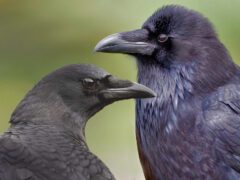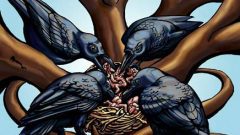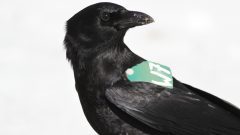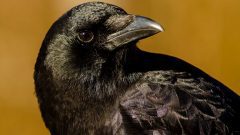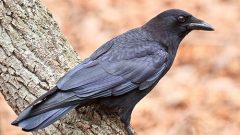The Four Keys to ID
- Size & Shape
A large, long-legged, thick-necked bird with a heavy, straight bill. In flight, the wings are fairly broad and rounded with the wingtip feathers spread like fingers. The short tail is rounded or squared off at the end.
Relative Size
Nearly twice the size of a Blue Jay; about two-thirds the size of a Common Raven

 crow-sized
crow-sizedMeasurements
- Both Sexes
- Length: 15.8-20.9 in (40-53 cm)
- Weight: 11.2-21.9 oz (316-620 g)
- Wingspan: 33.5-39.4 in (85-100 cm)
© Henry Burton / Macaulay Library
- Color Pattern
American Crows are all black, even the legs and bill. When crows molt, the old feathers can appear brownish or scaly compared to the glossy new feathers.
© Amanda Guercio / Macaulay Library - Behavior
American Crows are very social, sometimes forming flocks in the thousands. Inquisitive and sometimes mischievous, crows are good learners and problem-solvers, often raiding garbage cans and picking over discarded food containers. They’re also aggressive and often chase away larger birds including hawks, owls and herons.
- Habitat
American Crows are common birds of fields, open woodlands, and forests. They thrive around people, and you’ll often find them in agricultural fields, lawns, parking lots, athletic fields, roadsides, towns, and city garbage dumps.
© Jay McGowan / Macaulay Library
Regional Differences
Crows in the West are slightly smaller than eastern crows. Crows in Florida are small with large feet. Crows in the Pacific Northwest were formerly known as the Northwestern Crow and considered to be a separate species until 2021. They are slightly smaller and have a deeper voice.


















